A couple months ago we posted a heads-up about a new product from AutoTargets, which was on the way for testing. Well, test it we did and the system worked as advertised. The digital, reactive, automated target lifters created their own WiFi repeating system, communicating with the Android app, raising and falling on impact, keeping track of accuracy and shooting speed, and providing all the fun of a fairground shooting gallery in the comfort of my own National Forest land . . .
A 20-minute video review means I got a bit carried away, but there’s just so much potential with this system that I still only scratched the surface. If you’re more interested in simply seeing it in action, keeping me on my toes and blasting down targets like Whac-A-Mole with a .40 S&W, I chopped it down to a 4 minute cut:
What It Does
The AutoTargets system consists of one or more automated target lift units that sync together and present targets to the shooter. They rise quickly, recognize the bullet impact in one of four target zones, and fall.
Basically any parameter imaginable — for instance, how many hits are required to drop the target, where on the target the hit needs to be, point values that must be achieved, delay between lifts, lift order, scenario duration, and more — is set through an Android (iOS coming soon) app. AutoTargets’ Quick Start Guide provides suggested settings for a bunch of different drills, scenarios, and games.
Via the app, your phone and/or tablet makes a steel target impact-like noise and/or vibrates upon bullet impact. It logs all of your hits and the duration between hits, plus calculates a total point value based on accuracy. This allows for competition between friends or for measuring one’s own improvement.
Tell it where your targets are on the field, tell it how many hits and what kind of hits are required to drop it, set up your scenario parameters, and then…GO!
Targets can be up to 250 yards from each other, acting as repeaters to communicate back to the phone or tablet running the show. Ideally the tablet is about 50 yards from the first target — although it can work up to 100 yards without using a booster — but with the four targets I’ve borrowed we’re still talking about up to 800 yards to the farthest one. Needless to say, this range potential surprised me.
Once set up, what you have is a fully programmable, reactive shooting gallery. It’s Whac-A-Mole with a gun. It’s an absurd amount of fun but it’s also extremely relevant training and practice.
How It Works
A 20oz paintball gun CO2 tank provides pneumatic power to lift the targets, achieving between 1,000 and 1,500 lifts on a single tank. Tubing is run from the tank then from target to target, daisy chaining them together. Multiple tanks can be used if targets or sets of targets are particularly far apart.
The guts of a lifter unit include a pneumatic piston, removable LiPo battery pack good for about 12 hours of run time between charges, circuit board, and WiFi transmitter/receiver all housed in a powdercoated steel chassis.
Push the power button and the unit boots up, establishes its WiFi network, and syncs with any other units within range. They each act as signal repeaters for each other. I set up these 4 lifters a few times in different areas and at varying distances out to 150 yards, and each time they booted and synced flawlessly. It was much smoother and simpler than I anticipated. Connect the mobile app to the target closest to the device or, if they’re all within 50 yards, to whichever one you please. The rest will communicate through it to the app; automatically and seamlessly.
The real wizardry comes in the bullet-sensing targets themselves. Basically, the targets amount to two sheets of foam board like what’s used for presentations and science fairs and such, with a sheet of conductive material (e.g. aluminum foil) sandwiched in-between.
This material allows the system to sense when it’s touched by a bullet, and it sends that signal back to the lifter unit for relay to the app.
Yes, this does mean that if you bore enough of a hole and bullets pass through without even slightly touching the target, it won’t recognize hits. How long each target lasts depends on how accurate you are and what caliber you’re shooting. Estimated target life before missed shots become annoying is 500+ rounds. Smaller holes with a larger spread will bump that number up. I chose to start out at rifle ranges with a .223 and then bring it in to pistol range with a .40, figuring there’s no way a .40 can go through a .223 hole without touching. After running speed drills on four targets I’m clearly not accurate enough to worry about sending bullets through the same hole anyway.
AutoTargets will be releasing a variety of target styles, but for now it’s a silhouette with four hit zones: center mass, torso outside of center mass, head, and hostage taker head (not drawn on these targets but visible in the second screen shot of the app above). Point values vary based on zone.
Electrical pickups push into the target and signal to the unit which zone is struck.

From here, the app runs the show. Development on features and functionality is ongoing, including the use of the external trigger input built into each lift unit. This will allow for a target presentation based on a physical switch such as a door opening or a foot switch activating, etc., opening up even further possibilities for training purposes. As is, the combination of per-target hit requirements — zone and number of hits — and adjustable shooting scenario parameters offers nearly limitless customization and drills ranging from quick draw contests to fast-as-you-can-hit-’em to woods walk surprise presentations (i.e. tell the system to present targets in a specific order and add a decent delay between lifts, so as the shooter walks from the line out into the distance targets leap out at him/her. Maybe some fall with one hit, maybe some require a failure drill…).
On The Range
Well, I went through more ammo than I intended to! In fact, I didn’t want to stop shooting and would have burned through even more if I hadn’t run completely out. As ammo is by far and away my biggest expense when testing guns or gear I tend to keep a close eye on it, but the AutoTargets system is just so freaking fun I couldn’t pull myself away.
As mentioned, this is also a highly useful training tool. It provides a dynamic shooting environment with instant feedback and post-action performance data. Add into the mix magazines loaded to random capacities to force surprise mag changes or dummy rounds inserted in mags to force stoppage drills, and the training potential just keeps going up. For a given drill, keep a log of total points and elapsed time to quantify improvement over time.
If I could change any one thing about the way this system works, it would be getting the targets to drop faster. It seems like they drop via gravity after venting CO2 pressure, and that drop doesn’t happen nearly as rapidly as the targets rise. Maybe if the valve dumped the CO2 faster or maybe it could actually power the target down with pressure in the other direction. Regardless, it’s a minor criticism and it’s the only one I can come up with (aside from, yeah, this system is expensive).
Actually, with a phone in the pocket giving the shooter vibration feedback upon hits, a connection to electronic muffs providing audio, or maybe just a bluetooth external speaker to allow the cues to be heard with ear pro on — and all of these options are available in the app right now — the utility of a target that instantly drops upon impact goes way down.
Conclusion
If it’s possible to have “too much fun,” playing ballistic Whac-A-Mole with an AutoTargets system is likely to get you there. For our more serious, Operational readers, it can also provide full-on defensive, offensive, and otherwise tactical training. Not that fun and training have to be mutually exclusive.
Everything worked as advertised — better than I expected, actually. If the packaging is any indication, AutoTargets has good engineers with extreme attention to detail and maybe a dash of OCD. I literally filmed over 4 minutes of me blabbering on about the packaging and excitedly showing how everything fit flawlessly inside of the compartmentalized shipping box. I cut this footage from the review video for obvious reasons — is “Are you weirdly excited about incredible product packaging?” a question on the 4473? — but wanted to mention it here because I think it’s indicative of a high level of care that went into every aspect of this system, including the exceptional user manual, and that all translated into great experiences out on the range.
AutoTargets products are currently available for purchase through Action Target.
Rating (out of five stars):
Overall * * * *
Take price out of the equation and AutoTargets nails 5 stars all day long without question. It’s just…you know…expensive. Not price-gouging expensive, just complicated systems with lots of materials and R&D costs expensive. That said, it’s still within reach and it sets up and takes down easily enough that I’d happily bring them out to the woods with me even if I’m just going shooting for a couple hours. It certainly makes that shooting a lot more fun, even if I have a harder time rationing ammo usage.

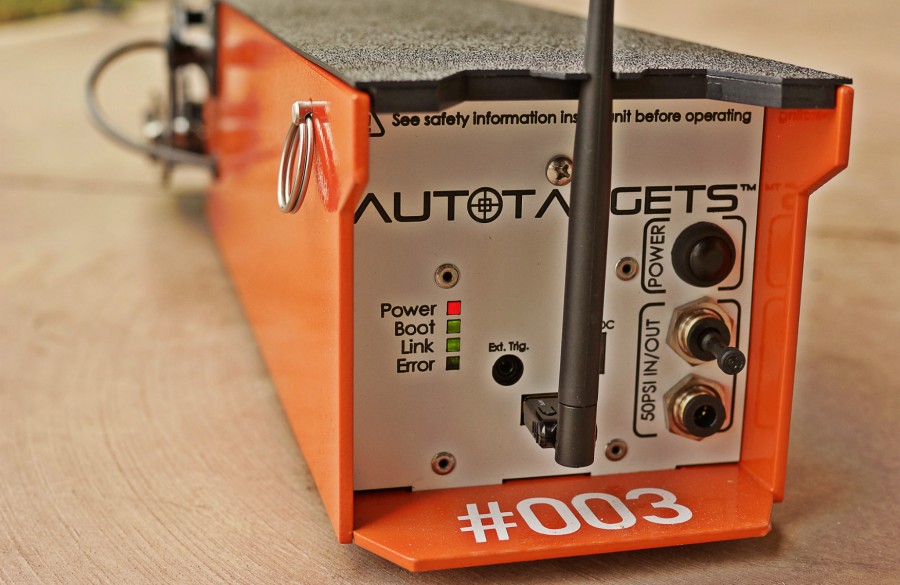

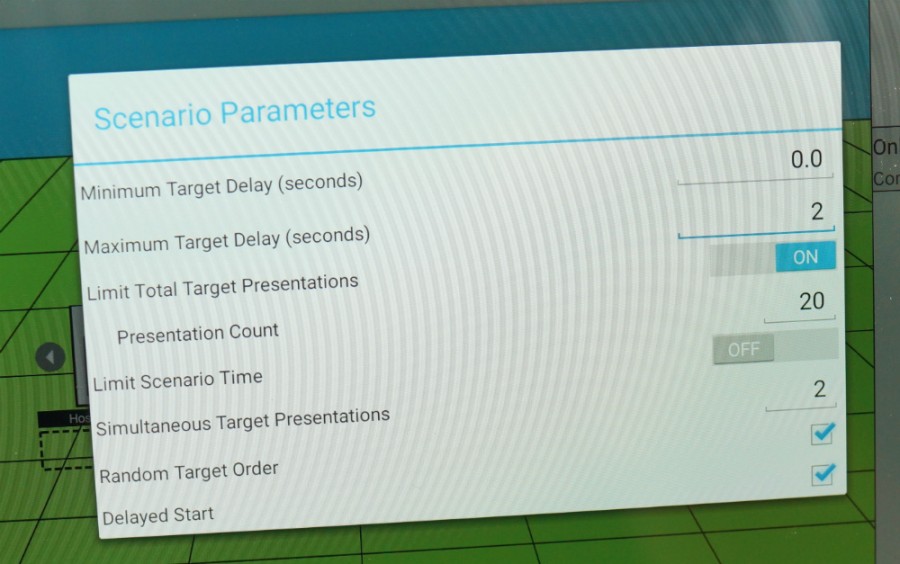


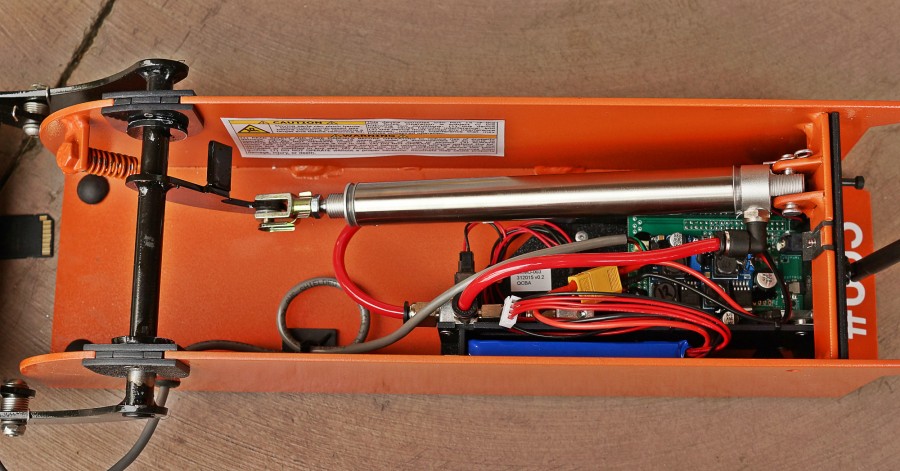
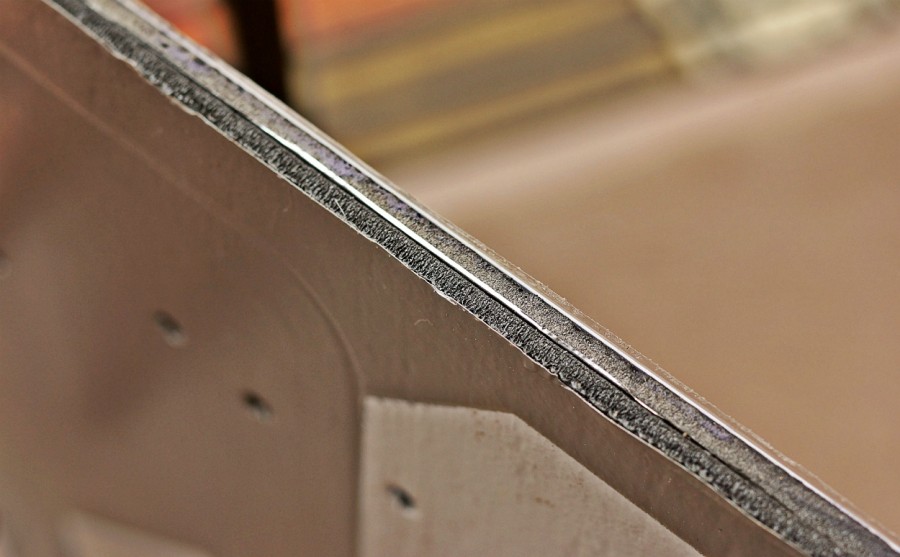


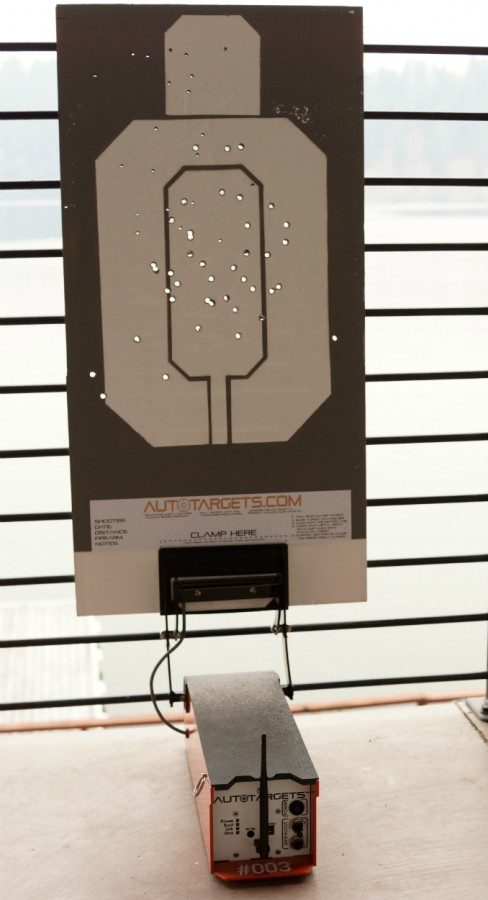



And I thought steel was expensive enough! But yeah, would love to have several of these in my backyard range. I could probably justify paying for one, but all the videos I’ve seen on these several are in use, I think I would maybe be disappointed if I just got one, kind of limits the scenarios you can do…
Yeah, the individual price of these isn’t really that bad for the technology you’re getting, but the problem is you’d need at least a few (preferably several) to really make it worthwhile. A single target wouldn’t provide a whole lot more training potential than just a static paper or steel target. Sure, it could pop up at random times, but you still know exactly where it’s going to come up. So you’d need at least two to keep it surprising, but I suspect that three would likely be the minimum for the kind of fun Jeremy is describing. With three or four targets, you can really start to set up some more complicated scenarios and games, but then you’re talking about thousands of dollars, which puts it well out of my reach. As much fun as that looks, if I’m spending three or four grand on gun stuff, I’d probably prefer to buy more guns…
I’m sure there are things I’m not thinking of, but with a single target you could do quick draw contests with friends (it’ll log elapsed time from buzzer to bullet impact, or from target presentation to bullet impact… and since you can tell the system to lift the target at a random time delay interval between X minimum seconds and Y maximum seconds it can truly surprise the shooter over and over) and all sorts of time- and accuracy-based scenarios (who can do 5 headshots faster, who can take out the hostage taker faster, who can rack up more points in 30 seconds, etc). Or obviously run these sorts of ‘games’ yourself for improvement purposes. I basically see the lifting/dropping functionality being less important when there’s just one target, and the system’s ability to tell where on the target you hit becoming even more important. Unlike a paper target, you could run failure drills all day long and not have to cover up the holes from your last run to know where your new hits where. The app will tell you whether or not you got two in center mass and one in the head, or if the target is set to drop only after achieving that you’ll know immediately if you succeeded in three shots or not.
Or, with an optional WiFi range extender you could get a single target pretty dang far out there and the tablet will show where the hits are on the target. Upon bullet impact, the specific zone on the silhouette flashes when it’s hit, and it displays how many impacts have occurred in each zone. Might be handy for when the target is too far away to actually see the bullet holes without walking down range. Basically, that part of it is the functionality Tyler liked so much about this steel target but a lift unit is 1/5th the weight and 2x the price 😉
Besides for all of the drills you can do with a single target system (draw, reload, malfunction, failure to stop, etc), you can also get your friend(s) to buy single target systems, and link them together when you go the range. That can save you money on the targets as well.
Another option is to convince your local shooting range to install AutoTargets, that way you can experience it without having to buy a system.
I suspect that your second suggestion is what most of us will try to do… 🙂
We certainly appreciate you guys helping to spread the word for us!
Maybe a bit too expensive for a single user, but this price puts it in range for smaller gun ranges that could charge hourly rates to use and clean up….Maybe I should find some land out in the boonies for sale….
Concerns:
1. How stable is the little target base/lifter unit?
2. Does the lifter arm appear it could handle some abuse/stray shots?
3. For that matter, how about the case of the lifter unit itself: what protection does it have externally to prevent toasting one when a shooter jerks the trigger?
I saw the first picture and all I could think about was whether or not users could expect to have to shield or armor the units themselves as the arms and front faces of the units do not appear to be protected much at all.
1. Pretty stable. They’re fairly heavy (12+ lbs each) and the targets are fairly light, and the units have rubber feet. I was putting them on forest ground that wasn’t flat or solid and had no issues. I shoved a stick under the corner of a couple of them because the ground wasn’t flat enough and it worked fine. The two at rifle ranges out at ~120 and ~150 yards were actually sitting on top of their shipping boxes! I’m sure AutoTargets would say not to do that, but they would have been too low otherwise because they were behind a berm. No issues. They sat on top of their boxes and provided enough weight and stability that they never shifted.
2. Some parts of it would. Some parts wouldn’t (e.g. if you hit the electronic target probe it’s going to break it). The design is such that it’s much lower than the target, of course, but certainly it’s possible to shoot the lifter and I’m sure somebody will do it sooner or later.
3. The case itself is steel and I suspect would protect the internals from basically any pistol round or rimfire. I think most rifle rounds would zip through it. The case, however, is the easiest part to protect. When I had the targets set up at rifle ranges I put a rock in front of the 50- and 80-yard lifter units. They were totally protected from me. The longer range ones were as well, just by default of them behind behind a berm and only the target itself was visible to me.
Additionally, in regard to accidently shooting parts of the lifters, AutoTargets has this on its FAQ:
Clearly, these are guys who have indeed thought their cunning plan all the way through.
Max, the units are very stable as long as you place them on a relatively flat surface. I see no reason why you can’t use Jeremy’s idea and place them on top of the shipping box, as long as you also protect the unit from gunfire. Actually, I think it’s a pretty good no-cost idea! We are planning to release an optional ballistics protection package which will be made of AR500 steel and will protect the entire unit from most common calibers. By making it optional, we can keep the cost and the weight down significantly. In the mean time, sand bags work just as good, and only cost a few bucks. We recommend one sand bag in front of the unit, and another on top of the lid to protect the clamp assembly. Thanks!
The sandbag thing is a good, simple idea. I admit that I didn’t read the safety guide hahaha… but the quick start guide was really great. I’m also going to be getting into much better shape if I’m carrying lifter units and sandbags out to rifle distances 😉
Great review! Awesome product! Take my money now!
Wait–production doesn’t start until September 2016. 🙁
What the funding campaign says there is that if they sell ALL of the units available through the Indiegogo thing then they won’t be caught up for starting normal production & website orders until next Sept. But units purchased through the funding campaign ship beginning in January. There’s a handy timeline graphic showing which units will ship when (i.e. first 150 ship in January, and 150 more ship each subsequent month): http://www.autotargets.com/pics/DeliverySchedule2drkr.png
Danny,
Jeremy is correct about the delivery dates. We all already producing units for demo’s and evaluation purposes, such as the ones you see in Jeremy’s video. We will be in full-scale production as soon as our Indiegogo campaign ends. Thanks!
What, no iOS? Dang hippies and their open-source.
Andy, iOS is in the works! The iOS app will be released in the first half of 2016, and will work with all existing lift units. In the mean time, you can find very affordable Android tablets that work great with our system. We recommend the Google Nexus 7 which can be purchased around $150. Thanks!
This only proves I need a bigger back yard
and a bigger wallet..
If it works with cheap military e-targets i would buy a bunch of these units. I think its cool that the auto target has the zone detection capability, but I would rather have a full size, cheap etarget or full ipsc sized target that just drops. The military quality etargets work on the same concept where the bullet completes a circuit to signal a hit.
I could see the automatic scoring component of this catching on big in USPSA matches, IF, and big IF, the price per target came down significantly. Quick back of the napkin math says that if you take 6 stages, assume an average of 10 targets per stage, and needing to replace the targets approximately every 30 shooters, that would come to about $40 per shooter in targets alone.. when most matches that size have a match fee in the area of $30.
Not having to go tape targets between shooters would be a huge quality of life improvement, but the cost would have to come down before that’s feasible. Of course the great thing about technology is that it tends to get cheaper as time moves on.
Jeremy, the targets last over 500 rounds depending on caliber at shot placement. You can get a 5-pack of targets for $105 during our Indiegogo crowdfunding campaign, which is enough for 2,500 rounds of shooting. That’s only around 4 cents per shot, which is significantly less than what you would pay for clay pigeons. And if you’re shooting .22lr, the numbers get even better.
The four I used for this testing are still going strong! I’m taking them out yet again this weekend to do some shooting with a couple of friends and to use them for putting more rounds through three different handguns here for review.
If anyone happens to check in on this review, I’d like to add that I still have three of these targets on long-term loan and they’re even better now than they were. AutoTargets has released a couple of software updates since the original test, and the targets are even faster. Not just software faster, but they even move down at a faster rate after being hit. The app itself has had updates and there are more features and controls. But the fact that the lift units themselves can receive both software and hardware updates is pretty cool. Targets are lasting many, many rounds.
I’ll probably post a follow-up article in mid-Q1.
Comments are closed.